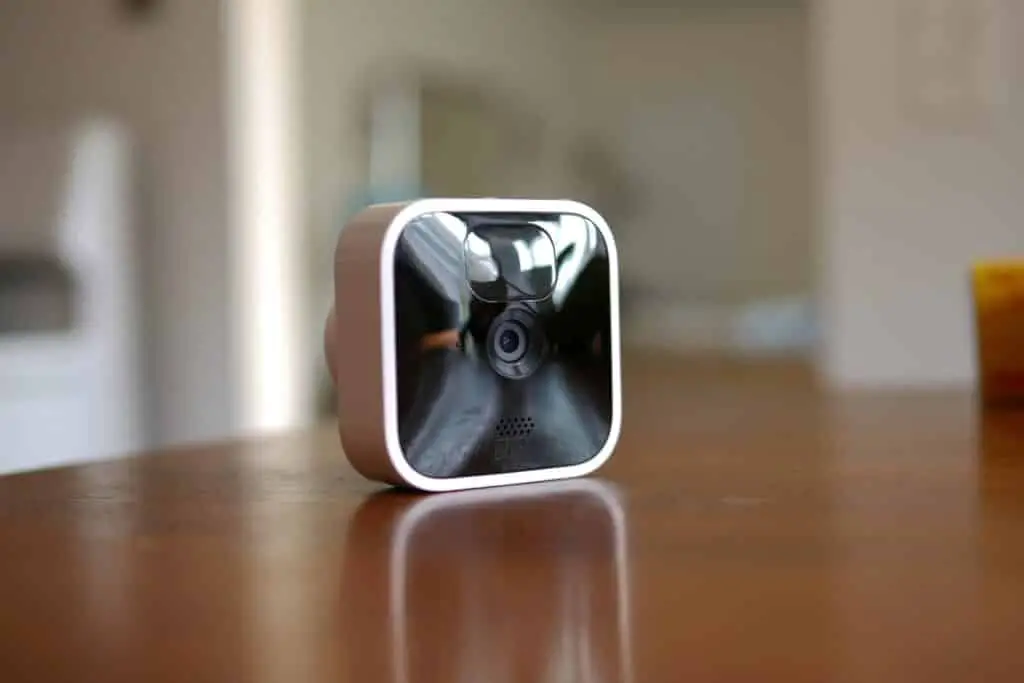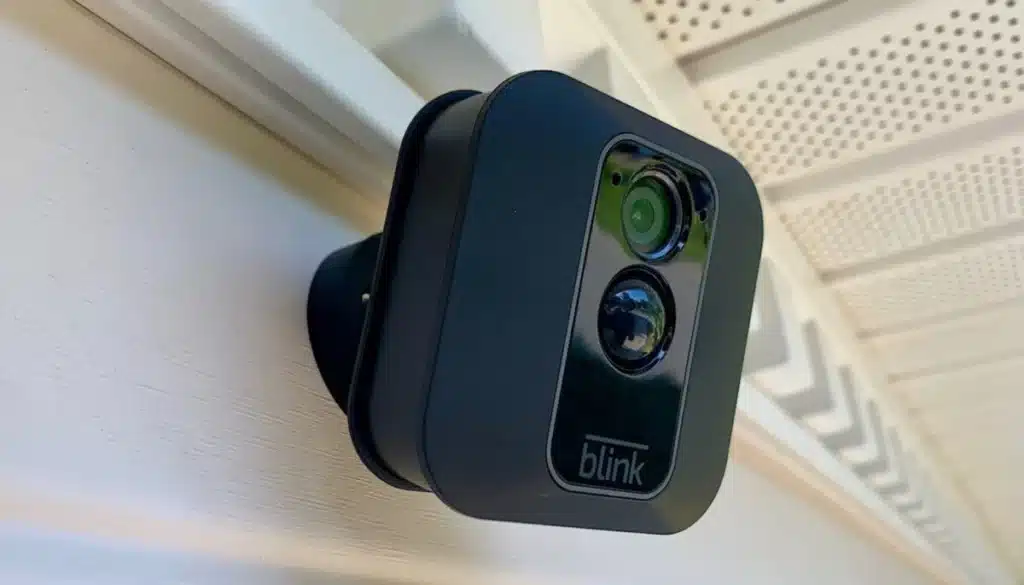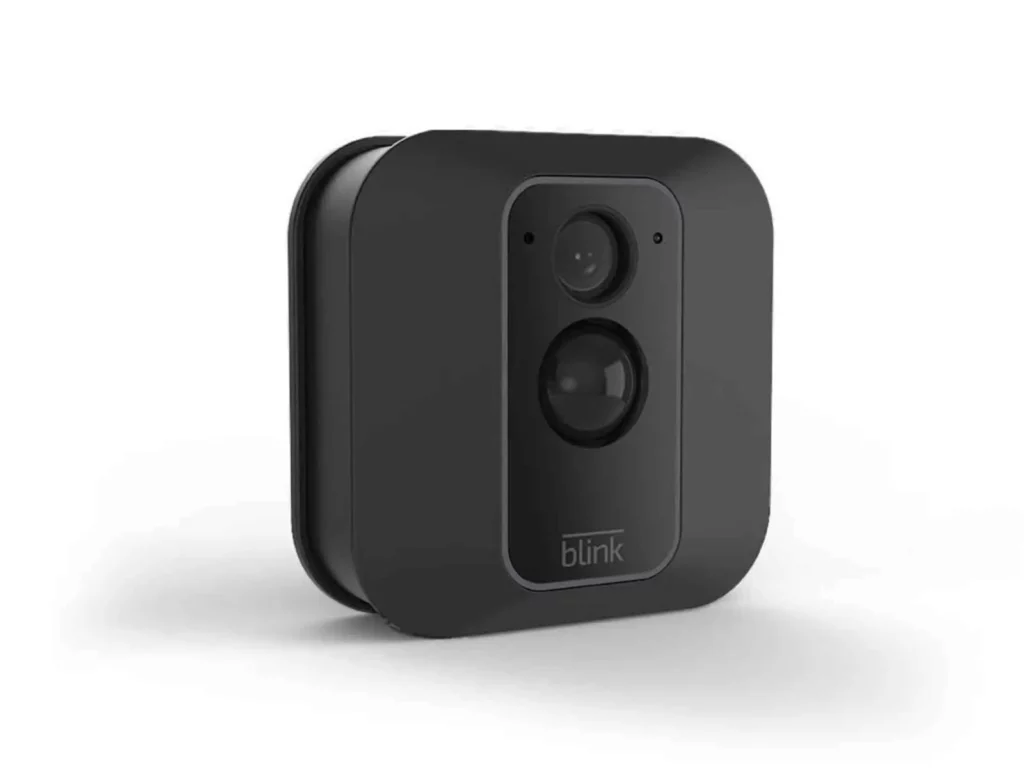Introduction
The advent of home security cameras has revolutionized the way we safeguard our homes and monitor our surroundings. Among the plethora of options available, Blink cameras have gained popularity for their ease of use, affordability, and reliable performance. However, an issue that some Blink camera users may encounter is the sudden shift from color to black and white footage, leaving them puzzled and seeking answers.
Several factors could contribute to this issue, ranging from technical glitches to environmental conditions. One possible explanation is a temporary software malfunction within the camera system. Such glitches could be triggered by firmware updates or compatibility issues with connected devices. Additionally, poor lighting conditions might prompt the camera’s infrared night vision mode to activate, which typically captures images in black and white.
Other external factors, such as bright artificial lights or sunlight, could interfere with the camera’s white balance, causing it to display monochromatic images. Furthermore, a hardware problem, such as a malfunctioning image sensor or lens, could be at fault. Dust or debris on the camera lens may also hinder light absorption, reducing the image quality and resulting in black and white footage.

Why is my Blink camera not showing in color?
If your camera images, thumbnails, motion clips, and Live View are not showing up in color, it is likely that the Night Vision Control is on. When Night Vision is on, an infrared (IR) LED shines in a spectrum outside of the visible light spectrum. IR cameras register heat, which shows up in video as shades of white.
The absence of color in your Blink camera’s footage can be a perplexing issue, especially when you rely on it for accurate surveillance. Several factors may contribute to why your Blink camera is not showing in color.
Firstly, lighting conditions play a crucial role. In low-light environments, the camera’s infrared night vision mode may activate, resulting in black and white imagery. This is a normal behavior for most security cameras, as it enhances visibility in dark settings.
Additionally, external factors like bright artificial lights or direct sunlight may interfere with the camera’s white balance, causing it to display monochromatic images. Adjusting the camera’s position or using lens filters can help address this issue.
Another possibility is a temporary software glitch within the camera system. Firmware updates or compatibility issues with connected devices could trigger such malfunctions. Checking for software updates and ensuring proper compatibility might resolve the problem. Moreover, hardware problems, such as a malfunctioning image sensor or a dirty camera lens, could hinder light absorption and result in black and white footage. Regular maintenance and cleaning are essential to ensure optimal camera performance.
Why is my Blink camera showing GREY?
When the signal strength between your camera and router isn’t adequate, you may experience the following: Delays or inability accessing live views. Motion detection clips are not recorded. Motion clip screens are not fully viewable, with half displayed as solid gray.
If your Blink camera is displaying grey footage, it can be a frustrating experience, as it may hinder accurate surveillance and compromise the security of your home. There are several potential reasons why your Blink camera is showing grey images:
Low Lighting Conditions
Inadequate lighting can cause the camera to struggle in capturing colors, resulting in grey or desaturated footage. The camera’s night vision mode may activate in low-light situations, which often displays images in shades of grey.
White Balance Issues
Incorrect white balance settings can lead to a greyish tint in the footage. The camera may fail to properly adjust to the surrounding lighting conditions, affecting the color representation.
Camera Position and Angle
The camera’s positioning and angle can influence the lighting it captures. Direct sunlight or bright artificial lights shining directly into the camera lens may wash out the colors, causing the footage to appear grey.
Software or Firmware Problems
Temporary software glitches or outdated firmware might also contribute to the grey image display. Ensuring that your camera’s software is up to date can help resolve such issues.
Hardware Malfunction
In some cases, a hardware problem like a malfunctioning image sensor or lens can cause grey or distorted footage.
What color is Blink camera when recording?
Every Blink camera has an illuminater, which is a blue LED light that turns on when the camera is recording. To check if a camera is recording, make sure the status LED is set to recording. All cameras, however, allow you to manually switch off the blue activity light.
When a Blink camera is recording, it captures footage in full color during daylight or well-lit conditions. The camera is designed to provide clear and vibrant color representation, offering a more detailed and realistic view of the surroundings. This feature enables users to easily identify objects, people, and any potential threats or events with greater accuracy.
However, when the lighting conditions become insufficient, such as during the evening or in low-light environments, the Blink camera will automatically switch to its infrared night vision mode. In this mode, the camera utilizes infrared light to illuminate the scene, allowing it to continue recording in black and white. This night vision capability ensures that the camera can still capture clear footage even in complete darkness.
The color of the Blink camera’s recordings depends on the lighting conditions. During the day or when there is adequate lighting, the camera records in full color. At night or in low-light situations, it switches to black and white recording using infrared night vision, ensuring continuous surveillance capabilities even in the absence of visible light.
Why is my blink camera showing a black screen?
To fix a Blink camera not showing Live View on the Home screen, check the status of the network and power cycle both the device and the Router. If the issue persists, update the Blink app or remove and reinstall the app. If these don’t work, factory reset your Blink camera.
Your Blink camera is displaying a black screen, it can be a concerning issue that hinders its surveillance capabilities. There are several potential reasons behind this problem:
Lens Cap or Obstruction
Ensure that the camera lens is free from any physical obstructions or a lens cap. Sometimes, accidental covering of the lens can lead to a black screen.
Power or Battery Issues
Check if the camera has sufficient power or if the batteries are drained. Low battery levels can cause the camera to turn off or display a black screen.
Network Connectivity Problems
A loss of internet connection or poor Wi-Fi signal can prevent the camera from transmitting live footage, leading to a black screen.
Software or Firmware Glitches
Temporary software or firmware issues can affect the camera’s functionality and result in a black screen. Ensure that your camera’s software is up to date.
Camera Hardware Faults
In some cases, there may be hardware problems with the camera that cause it to show a black screen. These issues could range from a malfunctioning image sensor to other internal defects.
How do I change my Blink to Dark Mode?
The switch will always be there for you in your profile. To go dark, open the User Profile, find the theme switch and choose the Dark Mode.
Blink cameras do not have a built-in dark mode feature. Blink cameras typically operate in color mode during well-lit conditions, and when the lighting becomes insufficient, they automatically switch to infrared night vision mode, which displays footage in black and white.
The infrared night vision mode ensures clear and visible footage even in low-light or dark environments, providing continuous surveillance capabilities without relying on visible light.
If you are looking to enhance the camera’s performance in low-light conditions, you can try the following tips:
Ensure Adequate Lighting
Install additional lighting sources in the monitored area to improve visibility during nighttime.
Check Camera Positioning
Ensure the camera is positioned correctly and at the optimal angle to capture the best possible footage.
Remove Obstructions
Ensure there are no obstacles, dirt, or dust obstructing the camera’s lens or infrared sensors.
Update Firmware
Regularly check for firmware updates for your Blink camera to ensure it is running the latest software version for optimal performance.
Consider Other Camera Models
If dark mode or enhanced low-light capabilities are essential for your needs, consider looking into other camera models or brands that offer specific night vision features.

Does blink camera have color?
The illuminator makes the recordings black and white. Fortunately, you can turn the illuminator off to have your recordings in colour. You can do so by; Going to Night Vision under Camera Settings.
Blink cameras do have colour capabilities. When operating in well-lit conditions or during the daytime, Blink cameras capture footage in full color, providing clear and vibrant images with accurate color representation. This feature is essential for capturing detailed information, identifying objects, and recognizing individuals with ease.
However, in low-light or dark environments, Blink cameras automatically switch to their infrared night vision mode. In this mode, the camera utilizes infrared light to illuminate the scene, allowing it to continue recording in black and white. This night vision capability ensures that the camera can still capture clear and visible footage, even in complete darkness when traditional visible light is insufficient.
The transition to black and white footage in night vision mode does not compromise the camera’s performance. Instead, it enables continuous monitoring without relying on visible light sources, making it ideal for nighttime surveillance and ensuring the camera’s effectiveness in all lighting conditions.
Why is my Blink camera displaying black and white footage instead of color?
The sudden display of black and white footage instead of color on your Blink camera can be attributed to various factors related to lighting, software, and hardware. Below are some common reasons why this issue may occur:
Low Lighting Conditions
In low-light environments or during nighttime, Blink cameras automatically switch to infrared night vision mode. This mode uses infrared light to capture clear images in black and white, as visible light may not be sufficient for color representation.
Infrared Interference
If there are strong sources of infrared light present near the camera, it can trigger the infrared night vision mode, leading to black and white footage.
Software Glitches
Temporary software glitches or compatibility issues can disrupt the camera’s color settings, causing it to display footage in black and white instead of color.
White Balance Settings
Incorrect white balance settings can affect color representation in the footage. A misconfigured white balance can result in monochromatic images.
Camera Position and Angle
Bright lights, whether natural or artificial, shining directly into the camera’s lens can cause the camera to switch to black and white mode due to exposure adjustments.
Camera Hardware Issues
Malfunctioning image sensors, lens problems, or other hardware faults can also contribute to the camera’s inability to capture color footage.
What are the common reasons for black and white footage on my Blink camera?
The occurrence of black and white footage on your Blink camera can be attributed to several common reasons related to lighting, settings, and technical issues. Here are some of the most prevalent causes:
Low Light or Night Vision Mode
When the camera detects low lighting conditions or enters night mode, it switches to infrared night vision to improve visibility. In this mode, the camera captures footage in black and white, as it relies on infrared light to illuminate the scene.
Bright Light Interference
Excessive bright light, whether from natural sources like sunlight or strong artificial lights, can trigger the camera’s exposure adjustments. This may cause the camera to switch to black and white mode temporarily.
Infrared Interference
If there are other infrared light sources nearby, such as motion sensors or security lighting with night vision capabilities, they can interfere with your Blink camera’s color detection, leading to black and white footage.
White Balance Settings
Incorrect white balance settings can affect the camera’s color representation. Improperly configured white balance may result in monochromatic images.
Software or Firmware Issues
Temporary software glitches, compatibility problems, or outdated firmware can disrupt the camera’s color settings, causing it to display footage in black and white.
Camera Hardware Problems
Faulty image sensors, lens issues, or other hardware malfunctions can also contribute to the camera’s inability to capture color footage.

Conclusion
The occurrence of a Blink camera displaying black and white footage can be attributed to a variety of factors, both technical and environmental. Software malfunctions, such as firmware updates or compatibility problems with connected devices, can cause temporary disruptions in the camera’s color settings. Users are advised to check for software updates and ensure proper compatibility to mitigate such occurrences.
Environmental conditions, especially lighting, play a significant role in the camera’s behavior. In low-light situations, the camera’s infrared night vision mode may activate, resulting in black and white imagery. Users should be mindful of the surrounding Blink Camera lighting and take measures to improve illumination in monitored areas. External elements, such as intense artificial lights or direct sunlight, may interfere with the camera’s white balance, affecting color representation in the footage.
Adjusting camera angles or using additional accessories like lens filters can help address this issue. Hardware problems, like malfunctioning image sensors or dirty camera lenses, may also contribute to the loss of color in the footage. Regular maintenance and cleaning are essential to ensure optimal camera performance. By understanding the potential factors and implementing appropriate solutions, users can maximize the camera’s capabilities and regain the benefits of full-color surveillance.

